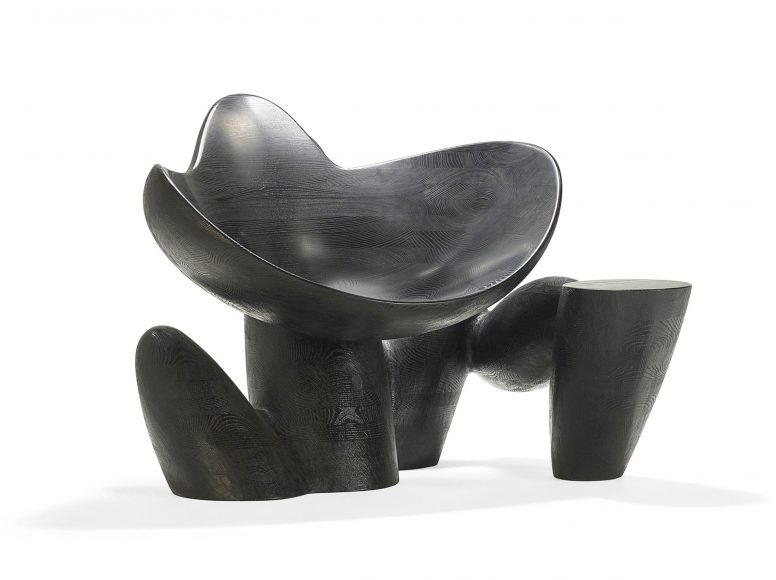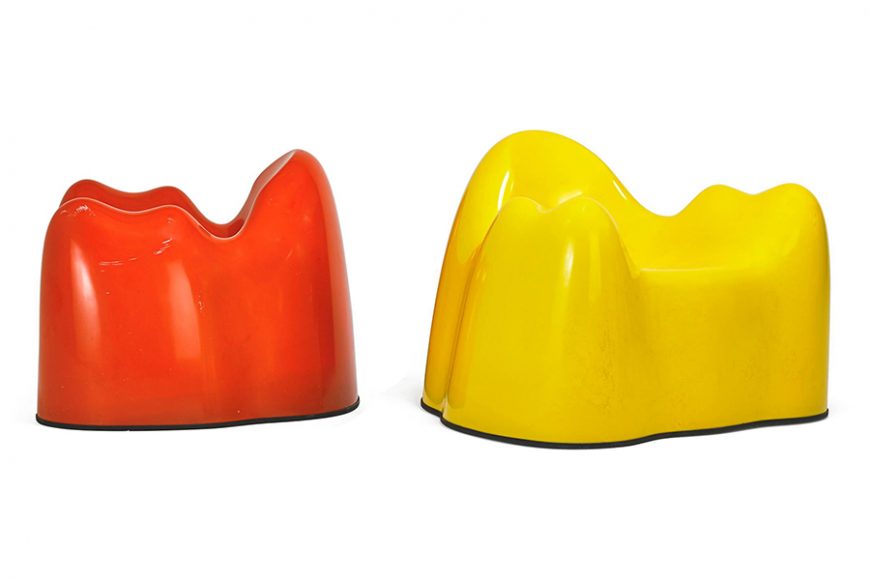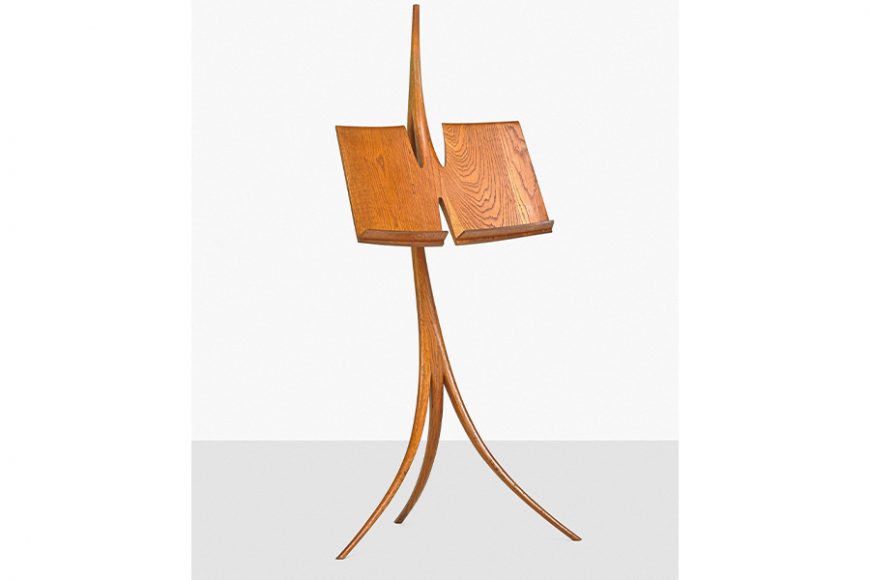The works of Wendell Castle (1932-2018), one the foremost names in American studio craft furniture, are viewed as increasingly significant in 20th-century design. With Castle’s recent death, the increase in value of his works has accelerated; examples of his organic and sculptural furniture have recently achieved $380,000 at auction.
Kansas-born Castle enjoyed a prolific career spanning more than 50 years. He studied industrial design and sculpture at the University of Kansas before moving to Rochester in the early 1960s. He set up a studio nearby in Scottsville, and taught at the School for American Craftsmen at the Rochester Institute of Technology.
Castle had a clear vision of how his work could be distinguished from his contemporaries. He knew both sculptors and furniture makers, but saw a niche in combining the two. Castle said “I wanted my work to have the same qualities as sculpture, and be accepted on the same terms. I gave up making sculpture in 1962 to devote myself full time to making furniture … I felt furniture of a certain type is the same as sculpture, just as important in every way.” And, indeed, it is seen as such. Today, Castle’s work can be found in more than 40 museums worldwide, including The Metropolitan Museum of Art, the Museum of Modern Art and the Victoria and Albert Museum in London.
Success and recognition came early to Castle. In 1964, his Music Rack was selected for the American section at the 1964 Milan Triennale, a seminal event in the design world. The work was inspired, in part, by the music stands of artist and furniture maker Wharton Esherick (1887-1970). Esherick is considered the father of studio craft and the only studio furniture maker by whom Castle was apparently influenced. Jad Attal, Rago’s Modern Furniture Design specialist, has likened Castle’s work to a musician who reinterprets a genre of music – the result was a new expression of craft.
While the sculptural aspect of Castle’s work sets it apart from most of his woodworking contemporaries, Castle’s also challenged convention by opting for new techniques and materials. His oeuvre differed greatly from other major craft woodworkers, such as George Nakashima, who embraced centuries-old woodworking techniques and showcased wood’s natural properties such as its fissures and free edges. Instead, Castle questioned even the basic structure of a piece of furniture, asking, for example, why a chair leg had to rest on the floor. Could it not extend from a wall instead?
Castle developed a stack-laminating process by gluing layers of wood into a rough shape, then carving it back to its finished form. This process freed Castle from the limitation of size of a piece of timber and the strength of the laminate meant that and Castle could create shapes that were impossible when using a block of wood. Late in his career, Castle again used new technology, employing 3-D scanning and computerized milling to reimagine old forms and to create laminated works with much greater accuracy, sophistication and scale.
Castle was likewise drawn to the possibilities of fiberglass technology in the 1960s, creating furniture and lighting in brightly colored pop art hues. His aptly named Molar chairs were an immediate success in the design world and remain highly collectible today. Later in his career, Castle returned to fiberglass, this time applying automobile paint or gold or silver leaf to the fiberglass base, the latter creating an ironically luxurious finish.
Trompe l’oeil sculpture and an extensive foray into post modernism were other facets of Castle’s career. Running through it all was Castle’s exceptional workmanship.
Castle promoted his work in a manner more akin to a fine artist, again setting him apart from his contemporaries. Throughout his career, Castle was represented by galleries, presenting his work in gallery settings and museum exhibitions. He focused his production on signed limited editions and even documented his works in a catalogue raisonné, which was most unusual in studio furniture production.
In today’s market, Castle’s fiberglass pieces are the most accessible of his works, available in the low $1,000s. Smaller sculptural works – mirrors, boxes, and other conventional forms – and Castle’s post-modernist works are the next step up in value. The more unconventional, sensual, and provocative the works are, the greater their value. Attal sees continued demand for Castle’s work. His easily recognizable style, continued gallery representation in the primary market, and the thorough documentation of his works gives buyers a high level of confidence in the authenticity of his pieces. All these factors combine to sustain strong value for Castle’s works in the secondary market.
For further reading: “Wendell Castle, A Catalogue Raisonné, 1958-2012” by Emily Evans Eerdmans.
Jennifer Pitman writes about the modern design, jewelry and fine art she encounters as Rago Auction’s senior account manager for Westchester and Connecticut. For more, contact jenny@ragoarts.com or (917) 745-2730.




